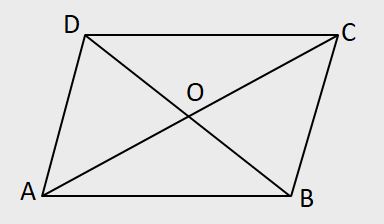|
|
|
View Answer
Shortcut:
If a parallelogram, the length of whose sies are 'a' cm and 'b' cm, has one diagonal 'd' cm long, then the length of the other diagonal is
√[ 2 ( a2 + b2 −
d2
/
2
)] m

Here, a = 12, b = 8, d = 10
Required length = √[ 2 ( 122 + 82 −
102
/
2
)]
= √[ 2 ( 144 + 64 −
100
/
2
)]
= √[2(144 + 64 − 50)]
= √[2(144 + 64 − 50)]
= √[2(158)] = √(316) = 17.8 (approx)
|
|